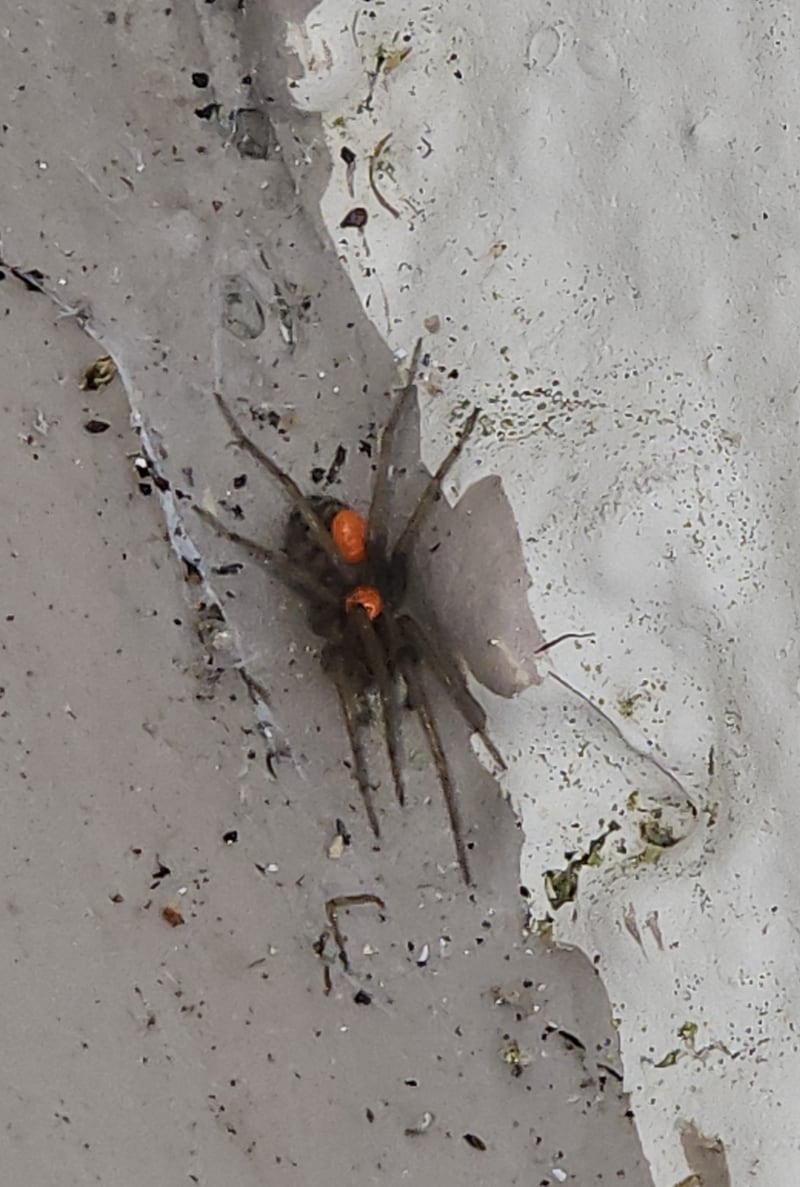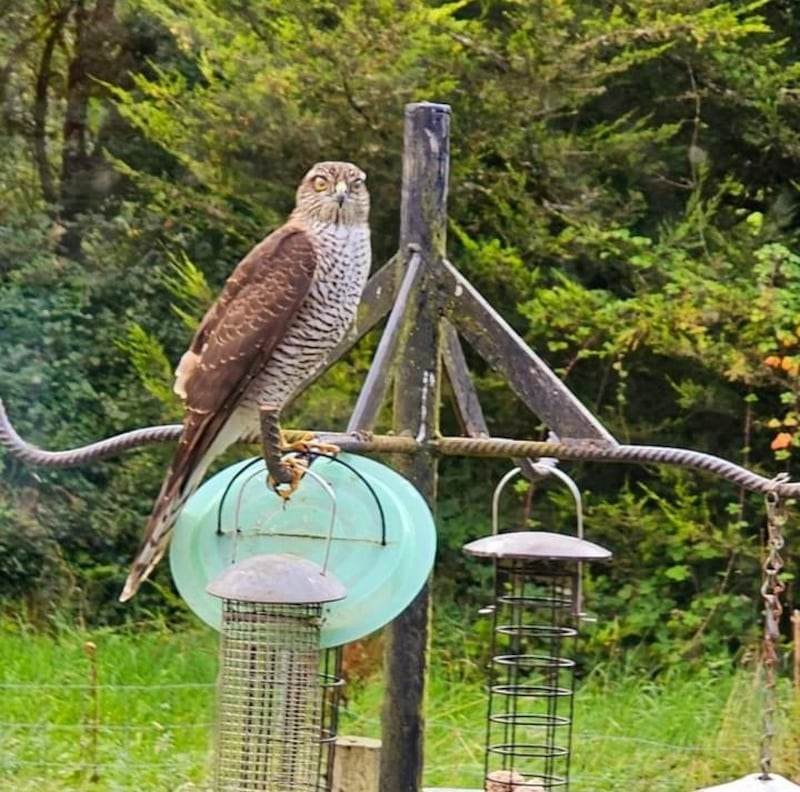I found this little creature with many more on the path leading to Knockdrum Fort near Castletownsend in west Cork. It measured about 4cm. I couldn’t detect any movement. The back was dry but the underbelly was moist. It seemed dead. What was it? Caimin Jones, Co Clare
It was a large black slug, Arion ater, which can exist in an orange form as well as the black form shown here. The black form always has an orange fringe to its sole. This one does look the worse for the wear all right – perhaps it had imbibed the slug pellets or other such nasty chemicals. Large numbers may assemble on freshly mown roadside verges to feed on the cut grass after daytime rain.

I discovered this spider resting in a shaded spot on a windowsill. Hopefully this is a cautionary tale against using internet searches to identify a subject, because it was identified as an Australian redback spider! What spider is this and what are the red dots on its back? Katrina Collins, Co Cork
Ah, the dreaded Google. At least you had the wit to doubt it and send your query to a reputable source. This is in fact one of the native Eratigena spiders – the house spider – which carries two red mites on its body. These belong almost certainly to the genus Leptus that specialises in targeting arachnids and a range of other invertebrate species. They are more usually spotted on harvestmen.
READ MORE

Is this a western conifer pine bug? I found it on the wall of the house here in Bray. Denis Cody, Co Wicklow
That is exactly what it is. Measuring 16mm x 20mm, this large shield bug is unmistakable. A native of western North America, it was first recorded here in Wexford in 2009 and has since spread along the east and south coasts. It lives usually on conifer trees in plantations, parks and gardens and feeds on the sap from the buds and seeds.

This beautiful female sparrowhawk was perched in Sonah Chundee’s garden in Walshestown, Mullingar, some time ago. From the kitchen window we watched her just a couple of metres away as she looked back and forth between us and the two small birds and a hen taking shelter in the bush below her. Tricia Waldron, Co Westmeath
Obviously she wasn’t very hungry or the bush would have been no protection. The sparrowhawk has two main hunting techniques: circling high overhead looking for birds below or hunting along hedgerows and in gardens, where it ambushes the prey by suddenly flying over the hedge on top of the unsuspecting bird. The element of surprise was certainly gone here.

This is a picture of a little insect that looked like an old first World War aircraft and took a fancy to the kitchen cabinet. It’s about 3cm across. What is it and what is its longevity? Michael Hannon, Dublin
It is Emmelina monodactyla, the common plume moth. This is classified as a micro moth on account of its small size. At rest it rolls up its wings into a T shape. The caterpillars feed in two overlapping generations on bindweed between May and September. The adult moth is often seen on fence posts, walls and even indoors, where it is attracted to light. It sips nectar from ivy blossom, blackberries and, in spring, from willow catkins. The moth flies at dusk from September to May in a single generation but can be seen in any month of the year. So the whole life cycle can take a year.
Please submit your nature query, observation, or photo, with a location, via irishtimes.com/eyeonnature or by email to weekend@irishtimes.com












